Iconic Planes Of The Second World War
Northrop P-61 Black Widow
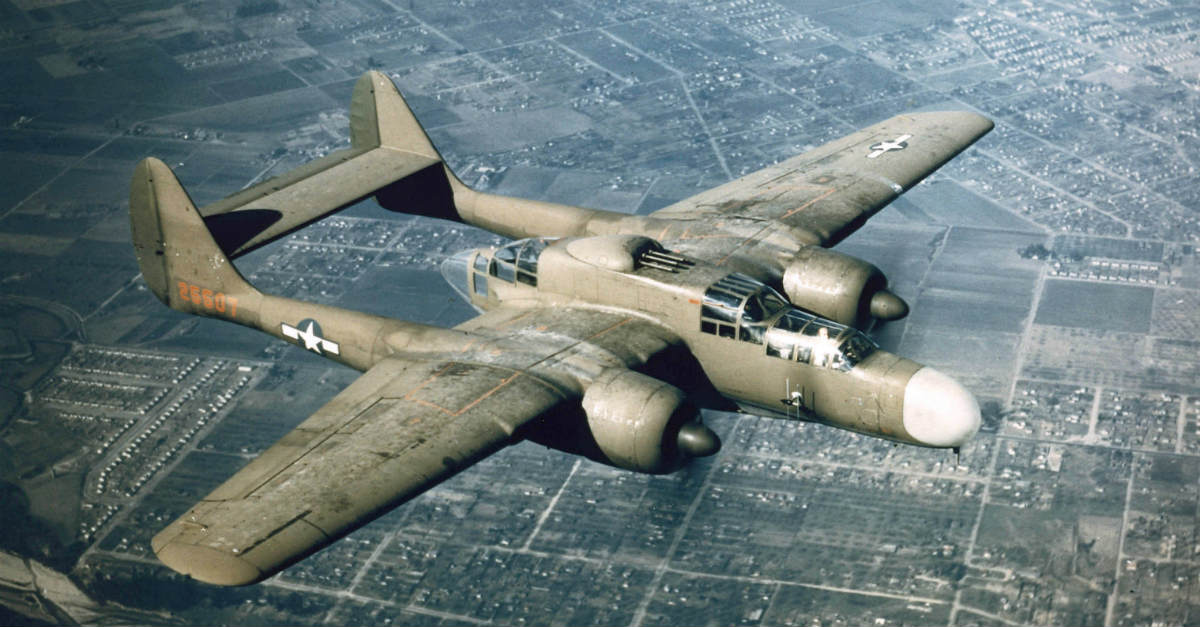
Despite its ominous name, the Northrop P-61 doesn’t get the attention that more iconic American planes of the Second World War seem to. And that’s a shame, as the Black Widow established an amazing service record from 1942 until its retirement in 1954.
Designed to work in conjunction with the innovative radar employed by the British, the P-61 was designed to be a high-altitude, long range night fighter capable of engaging enemy bombers before they reached their intended targets.
To that end, two Pratt & Whitney Double Wasp radial engines provide a combined 2,250 horsepower, giving the P-61 a range of over 600 miles. With four 20mm cannons backed by four .50 caliber M2 machine guns, the Black Widow spelled death for anything it encountered.
While only four survive today, none of them in airworthy condition, the fame of the P-61 deserves to grow.
de Havilland Dh.98 Mosquito
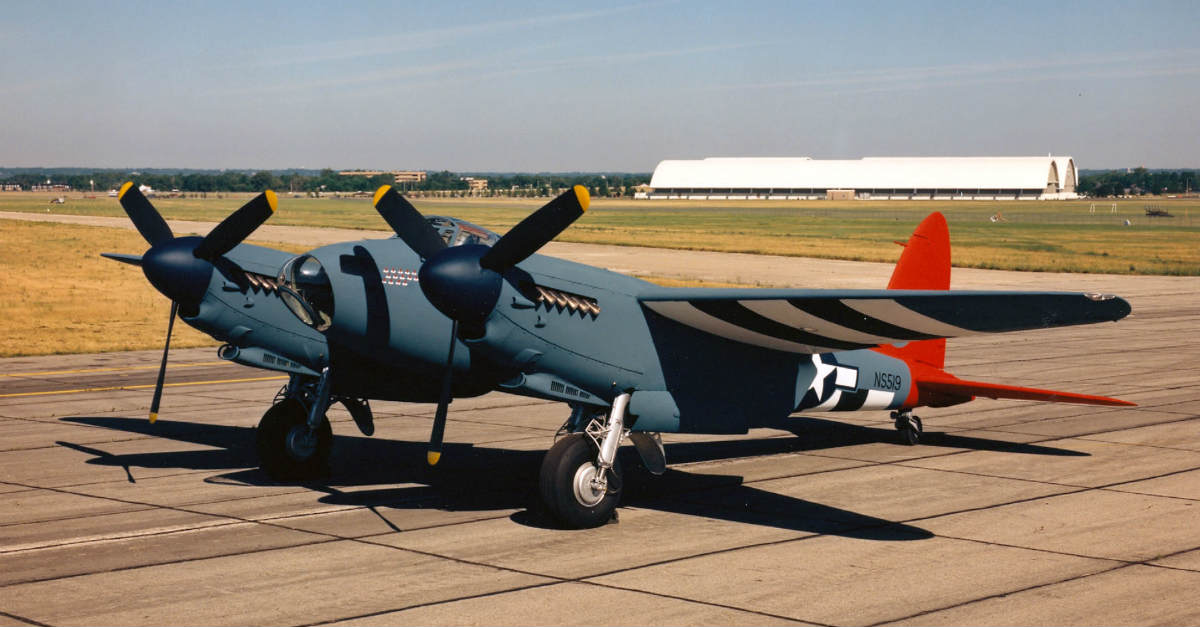
In some ways intended to fill a role similar to the Ju 88; the Dh.98 Mosquito was a multi-role aircraft that served as a fighter-bomber, fast bomber, reconnaissance aircraft, intruder, and night fighter. It could also function as a light cargo aircraft, particularly when speed was needed to move through neutral or enemy-controlled airspace.
Designed for a crew of 2, a pilot and a navigator/radio operator, the Dh.98 Mosquito was a two engine aircraft, generally built around two Rolls-Royce Merlin engines. With a speed of up to 336 miles per hour and a maximum altitude of 29,000 feet, the Mosquito was versatile enough to meet any demand made of it.
The standard armament was four guns, either Hispano Mk II cannons or Browning machine guns. Bomber variants could carry up to 4,000 pounds of bombs in any of a variety of configurations depending on the target. Combined with state of the art for the time radio navigation, it’s no wonder the Mosquito was so beloved by its operators.
Avro Lancaster

The stalwart British bomber of World War II, the Avro Lancaster is still revered for its many daring operations during that conflict across Europe and beyond. Its operational history is mind-boggling: over the course of the war, the “Lanc” delivered over 600,000 tons of bombs during its recorded 156,000 sorties over enemy targets.
This is an almost unmatched record and something of which the Royal Air Force is justifiably proud. With a crew of seven, the Lanc had a range of well over 2,500 miles, giving it enough reach to punch deep into the heart of enemy territory. Armed with eight machine guns for defensive purposes, its main weapon was its payload of 14,000 pounds of bombs, or with the “Grand Slam” modifications to the bomb bay, up to 22,000 pounds of ordinance.
Flown by some of the most decorated heroes of the war — today 17 intact Avro Lancaster bombers remain — two of which are airworthy and routinely flown for commemorative events in the UK and Canada.
Lavotchkin LaGG-3
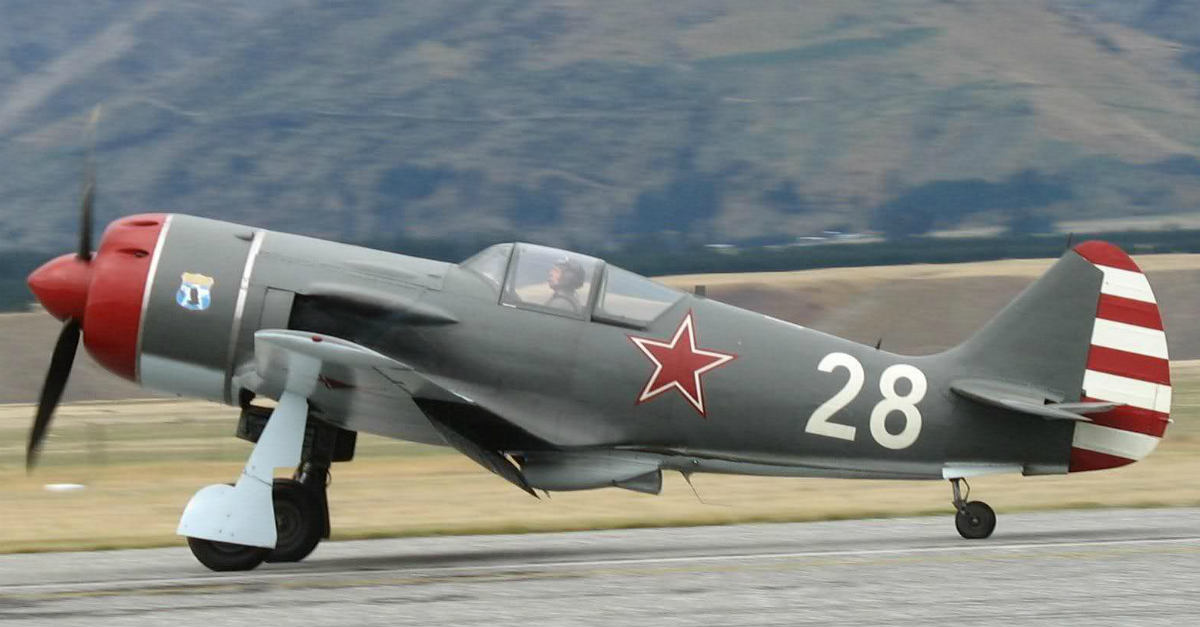
It’s a sad fact of history that the role of the Soviet Union in defeating Nazi Germany is often overlooked by Western audiences. More Soviets died in that war than soldiers of any other nation, and the resolve they showed contributed in a huge way to the eventual German defeat.
The Lavotchkin LaGG-3 was a big part of that, serving not only as a front-line fighter for the USSR during the early years of the war but as the basis of additional refinements to come. The LaGG-3 first appeared in service in early 1941, during some of the toughest years of the conflict for its native country.
Made almost entirely of wood held together with a polyvinyl resin, the unique construction of the LaGG-3 evolved over the course of its production. Initially hated by pilots, later versions with a more powerful Klimov M-105 engine and twin .50 caliber machine guns supporting a 20mm cannon were capable of both keeping pace with enemy fighters and delivering enough firepower to defeat any bomber they encountered.
While eclipsed by later designs, the LaGG-3 should never be forgotten.
Yakovlev Yak-3
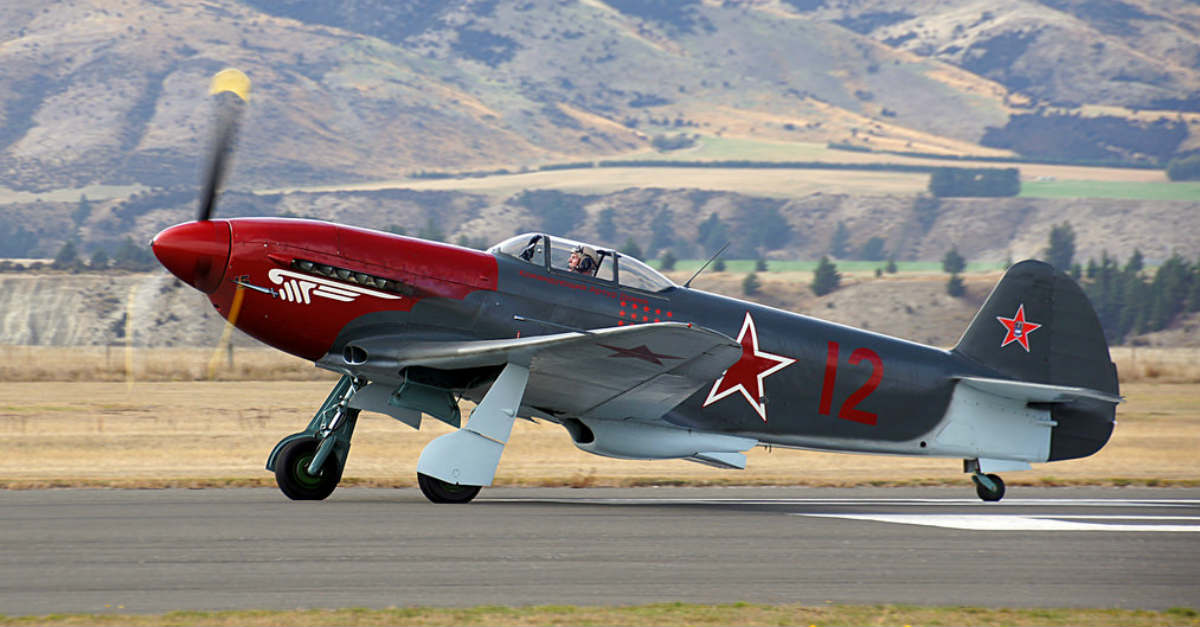
If Soviet pilots learned to love the LaGG-3, they quickly fell head over heels for the Yakovlev Yak-3. This tough little fighter was easy to fly, easy to maintain, and carried enough armament to shred the opposition when it was flown by a skilled operator. Though it appeared rather late in the war (1944), the Yak-3 flew hundreds of missions against the Luftwaffe with near-universal success.
A top speed of over 400 miles per hour made it competitive in a dead heat, while twin Berezin UBS machine guns and a fore-mounted 20mm ShVAK cannon give it enough firepower to bring down the enemy with a few well-placed blasts of fire.
Like several other Soviet fighters, it appeared in service in the militaries of other nations including Yugoslavia, Poland, and the Free French air force. The Normandie-Niemen squadron served on the Easter Front after the Battle of France led that country to capitulate.
While no period Yak-3 aircraft remain in airworthy condition, there are a number of working replicas that have been produced over the years.
North American P-51 Mustang
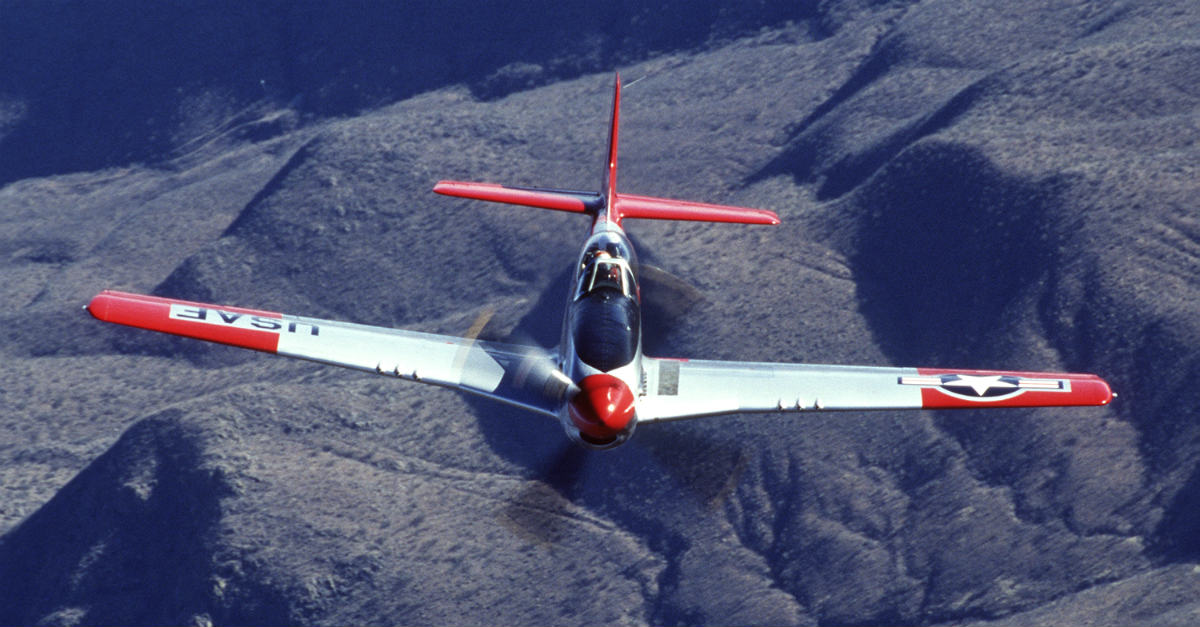
Arguably the most famous American fighter of the war, the P-51 Mustang has garnered an iconic status so great it would later lend its name to an equally iconic American automobile. Produced by North American Aviation from 1940 into the 1950s, the P-51 was beloved by those who flew it.
Looking at the specs, it’s very easy to see why they so adored this bird. While specifications vary depending on production model, in general the P-51 was powered by a Packard V-1650-7 V12 engine equipped with a two-stage intercooled supercharger. The end result was nearly 1,500 horsepower pushing a single engine fighter to a top speed of around 440 miles per hour, though some pilots report having pushed it even faster in an emergency.
Armed with six .50 caliber Browning M2 machine guns and an optional six to ten T64 H.V.A.R. rockets, the P-51 was feared as either fighter-bomber or dogfighting aircraft.
With over 15,000 produced, the P-51 is still much loved as a hobby aircraft for racing or restoration.
Supermarine Spitfire
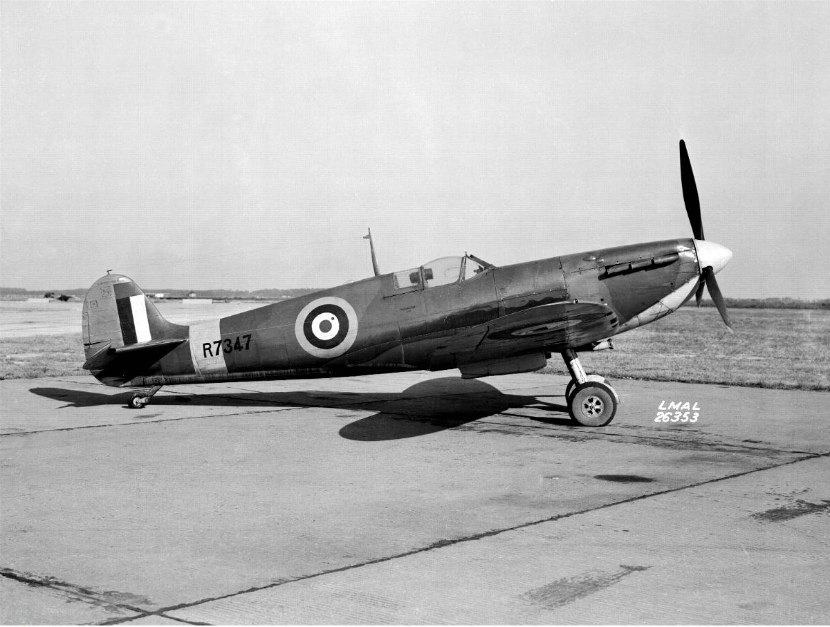
While the Mustang may have the hearts and minds of America, the Supermarine Spitfire is rightfully regarded internationally as the greatest fighter of the war. While it certainly has the performance and the track record to back that claim, part of its renown stems from its role during the Battle of Britain. In the UK’s darkest hour, the Spitfire and the folks operating her proved to be the last impenetrable line of defense for the home islands.
Designed by the legendary R.J. Mitchell and his team at Supermarine Aviation, the cutting edge elliptical wing design and aerodynamics gave the Spitfire superb maneuverability. Combined with the equally famous Rolls-Royce Merline engine, and the Spit had everything it needed to out-fly the enemy. Equipped with up to 8 Browning M2 machine guns, it was also able to carry bombs or incendiary ordinance as needed.
There are somewhere between 55 and 60 air-worthy Spitfires left, and rumors abound that mothballed fighters remain at old RAF air bases in Southeast Asia. As of the time of this writing, the search for those lost birds continues.
Boeing B-17 Flying Fortress
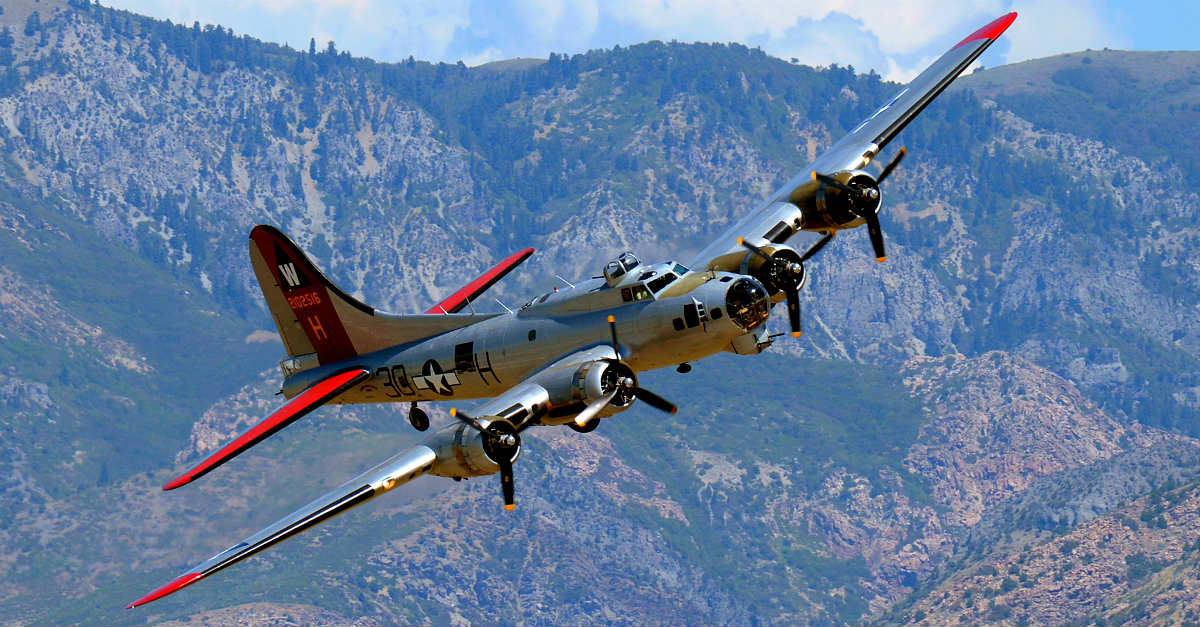
Developed by the Unites States Army Air Corps in the 1930’s, the Boeing B-17 Flying Fortress was the go-to heavy bomber for the US during the Second World War and even a bit beyond. It’s easy to see why. The Flying Fortress lives up to its name, severing as an airborne stronghold.
The armament alone is nearly mind-blowing: 13 Browning M2 .50 caliber machine guns mounted in eight positions around the aircraft—including in turrets that could rotate to track and engage enemy fighters—were enough to give any approaching hostile aircraft pause. Likewise, the bomb payload was also fearsomely impressive.
The B-17 could hold 4,500 pounds of ordinance for a long-range mission, 8,000 pounds for a short-range one, and a jaw-dropping 17,600 pounds when operating on overload. While the latter was not recommended, the effect on target must have been frightening to witness.
Dozens remain in either museums or private hands, and as of 2017 roughly 12-15 of them are air-worthy.
Consolidated PBY Catalina
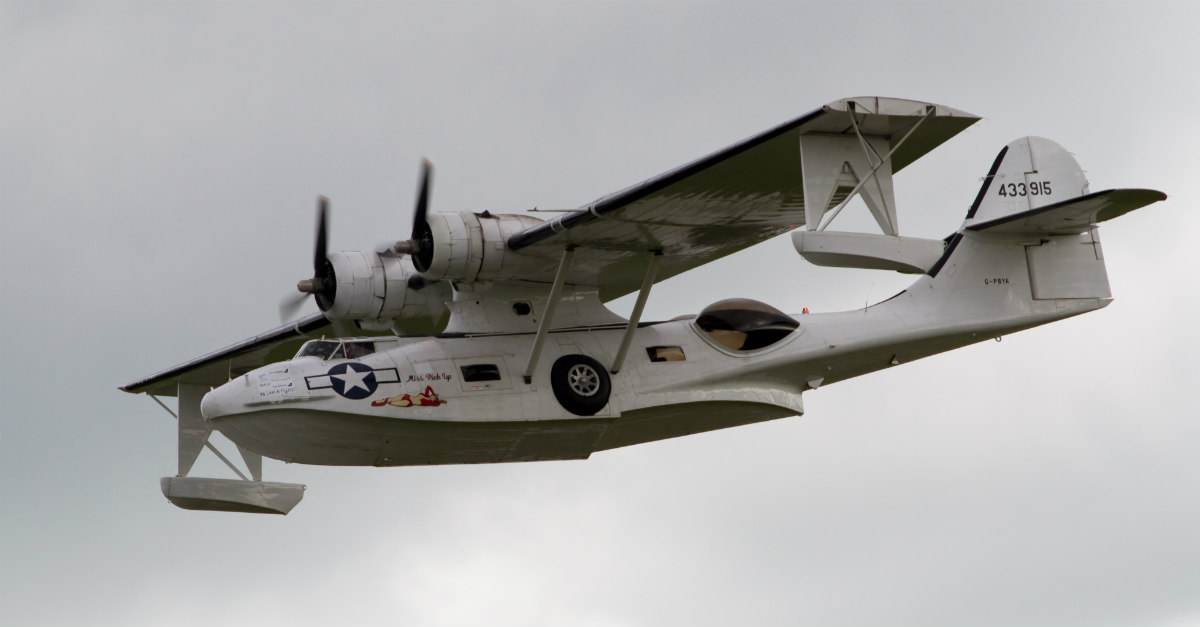
The PBY Catalina is regarded by many as one of the most beautiful aircraft ever built. It’s easy to see why. The under-slung fuselage and the iconic engine placement are visually striking, as was the floating design of this amazing aircraft. Developed originally as a patrol bomber, the Catalina saw service as a search and rescue aircraft, maritime patrol aircraft, and convoy escort.
The flexible design could be configured and armed in any number of ways, and its relatively long range—over 2,500 miles—made it perfect for the island-hopping campaigns of the Pacific Theater during the Second World War.
With its standard armament, the PBY Catalina could pack a punch. Three .30 caliber machine guns and 2 .50 caliber machine guns were enough to deter most fighters, and the payload of 4,000 pounds of bombs were formidable indeed.
Used by every branch of the US military during the war, the PBY Catalina was also popular internationally. Dozens remain today — many of them in air-worthy condition.
Reggiane Re.2005 Sagittario
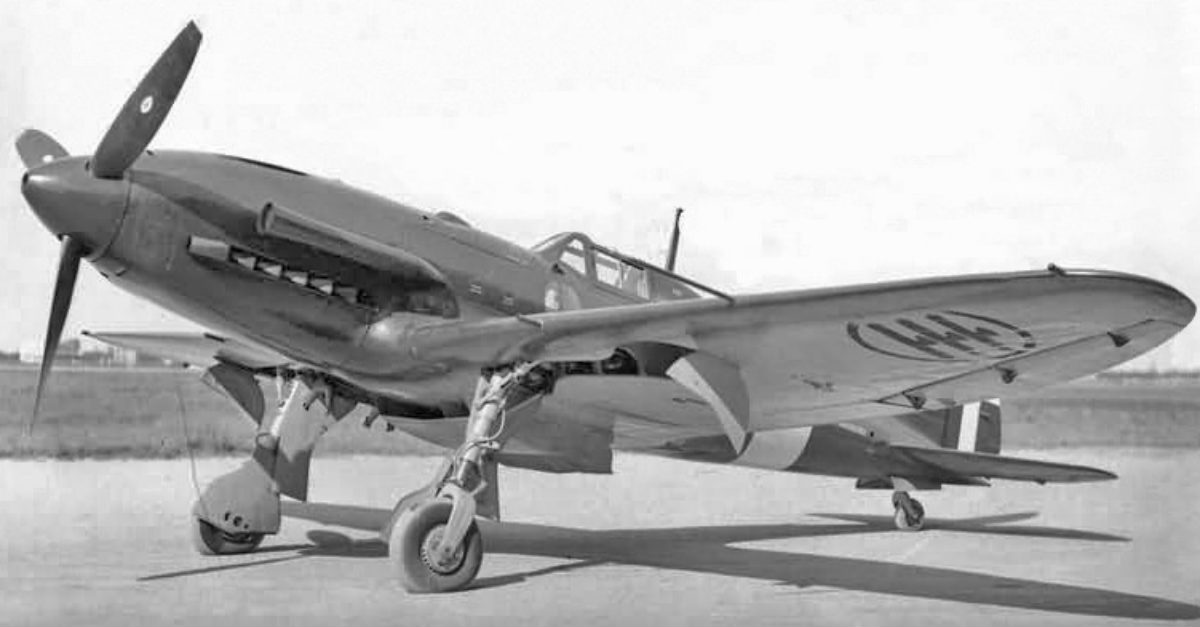
The name means “Sagittarius”, the astrological sign of the archer. And this Italian fighter is well named, combining speed, accuracy, and a love of the skies. This was the last of the Reggiane line of aircraft built by Italy for military service during the Second World War.
Building up on the distilled experiences of these earlier fighters, the Re.2005 is certainly one of the most visually impressive fighters of the Second World War, with semi-elliptical wings and an aggressive nose and cockpit placement.
The Fiat-built engine delivered a top speed of nearly 400 miles per hour, with a “never exceed” speed of well over 600 miles per hour. Armed with two 12.7mm Breda-SAFAT machine guns and three 20mm MG 151 cannons, the Re.2005 could also carry up to 1,000 pounds of bombs.
This may be the most formidable Axis fighter of the war, even if it is overshadowed by its German counterparts.
VL Myrsky
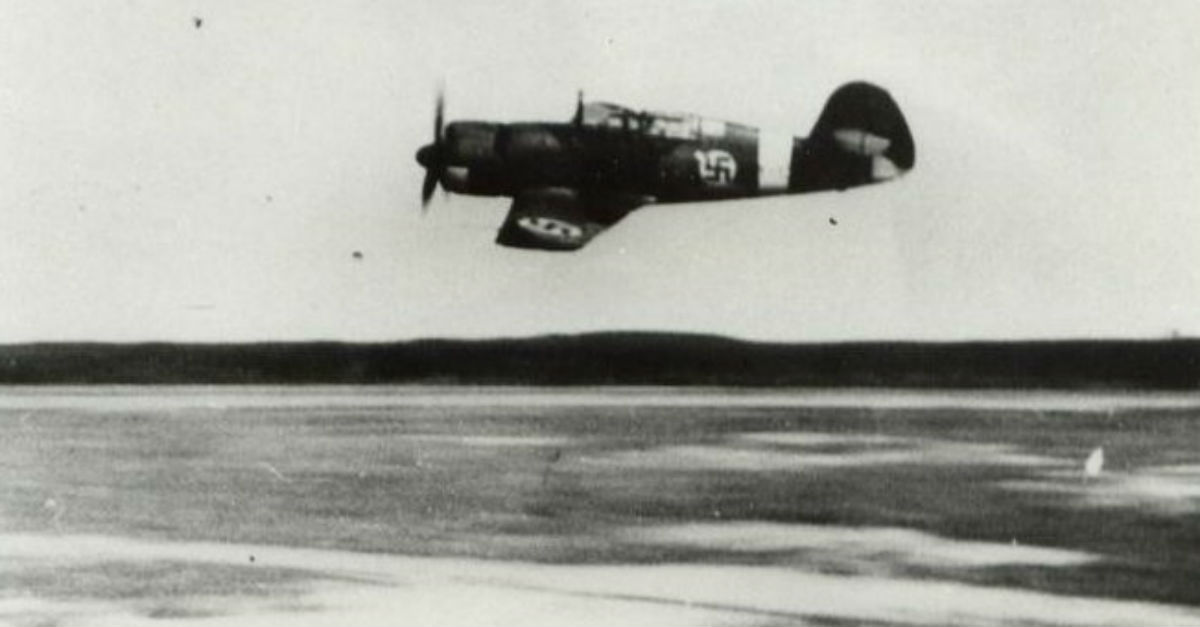
The only Finnish-designed fighter of the war, the VL Myrsky is a lesser known World War II aircraft that perhaps deserves more fame than it gets. Designed by Edward Wegelius, Martti Vainio, and Torsti Verkkola and introduced into service in 1943, the Myrsky—the name means “storm” in Finnish—proved that it could hold its own against its Soviet adversaries in a dogfight.
Initially designed around a duraluminium body, war time shortages meant that actual production was plywood and canvas around a steel frame. While these construction shortfalls lead to problems in the cold, wet conditions of the Finnish war, the Myrsky’s maneuverability and armament made up for them.
With a top speed of 330 miles per hour, impressive banking and climbing abilities, and four VKT 12.7mm machine guns, the Myrsky’s role may have been small, but its effect notable.
CAC Boomerang
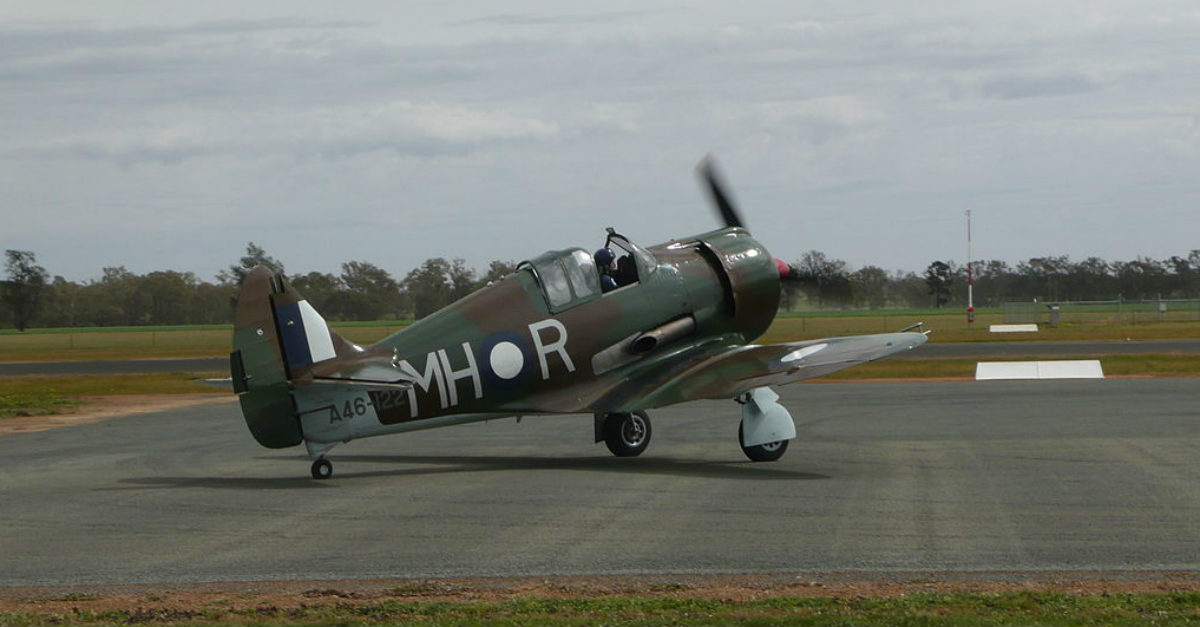
The first military aircraft designed and produced in Australia, the Boomerang went into production by the Commonwealth Aircraft Corporation in 1942 and remained in production until 1945. A single-seater fighter aircraft designed for air-to-air confrontations, the Boomerang’s actual service history would take a bit of a different track.
Initially, the Boomerang was used as a replacement aircraft for home based units, put in place in order to free up “better” fighters for front line service. As far as the available research shows, no Boomerang ever shot down an enemy aircraft.
It appears on this list of planes of the Second World War, however, because the Australian forces quickly found that while the Boomerang was lacking in dogfighting skills, it made a very effective close-air support fighter for ground operations.
Across the Southwest Pacific Theater, the Boomerang did the dirty work of keeping Australian troops safe from enemy fortifications, earning it a place in aviation history of the Second World War.
Fokker D.XXI
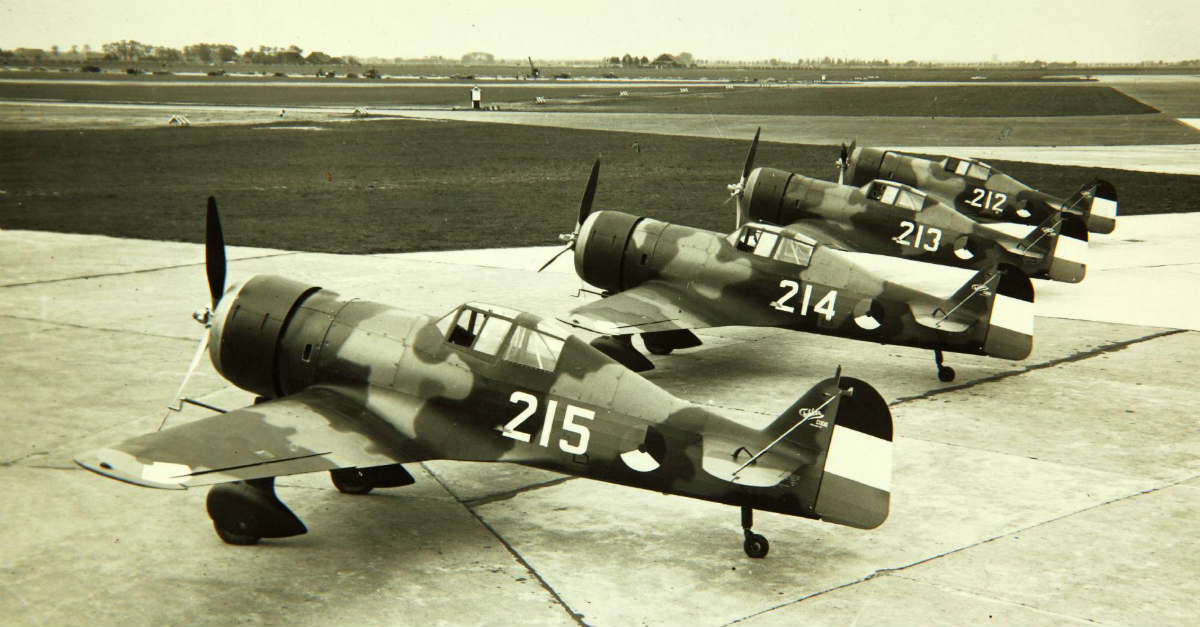
The Fokker D.XXI is another lesser-known aircraft of the Second World War, but its performance in service and fascinating history make it a worthy entry on this list. Built initially for the Royal Netherlands East Indies Army Air Force, it was intended to be a rugged yet affordable fighter offering competitive performance with the likely threats of its time.
In practice, the Fokker D.XXI would serve around the world in a wide variety of capacities, fighting its way through some of the toughest pieces of the war. Despite being produced for service in colonial Southeast Asia, a few Fokker D.XXI fighters were acquired by the Spanish Republic in 1936 for service in the Spanish Civil War.
Its role expanded again when Germany went to war with the Netherlands, when the D.XXI proved very effective in dogfights due to its maneuverability. The moment of glory came when the Finnish Air Force Adopted the Fokker D.XXI in its ongoing war against the Soviet Union.
The Fokker quickly proved that its rugged design could more than meet the difficult conditions of the conflict, and that its nimble design could compete with the best the USSR had to offer.
Republic P-43 Lancer
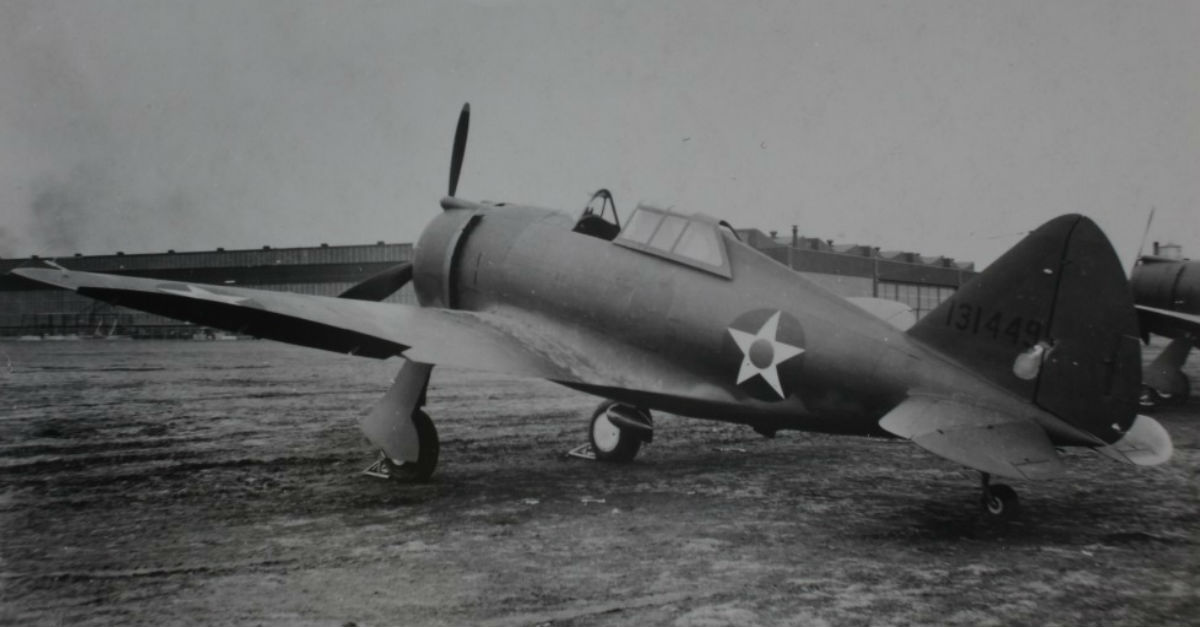
Built for the US Army Air Corp from 1940 to 1942, the Republic P-43 Lancer was no great shakes as a dogfighting aircraft, but it quickly found a role as a long-range pursuit and interceptor aircraft due to its peculiar performance qualities and unique engineering.
A single-seater, single-engine fighter with an all-metal design, the P-43 had an impressive range for a small fighter—650 miles or more. However, due to its design, which incorporated a then-advanced oxygen system for flying at altitude, it could operate at a ceiling of up to 36,000 feet.
This feature, combined with four .50 caliber Browning M2 machine guns, meant that the P-43 was capable of pursuing or engaging enemy bombers at distances and altitudes that other aircraft couldn’t match.
Until the introduction of the P-38 in 1941 and 1942, the P-43 was the only American fighter capable of catching and shooting down a Japanese “Dinah” reconnaissance plane. So while small and funny looking, the P-43 is an impressive little bird.
Lockheed P-38 Lightning
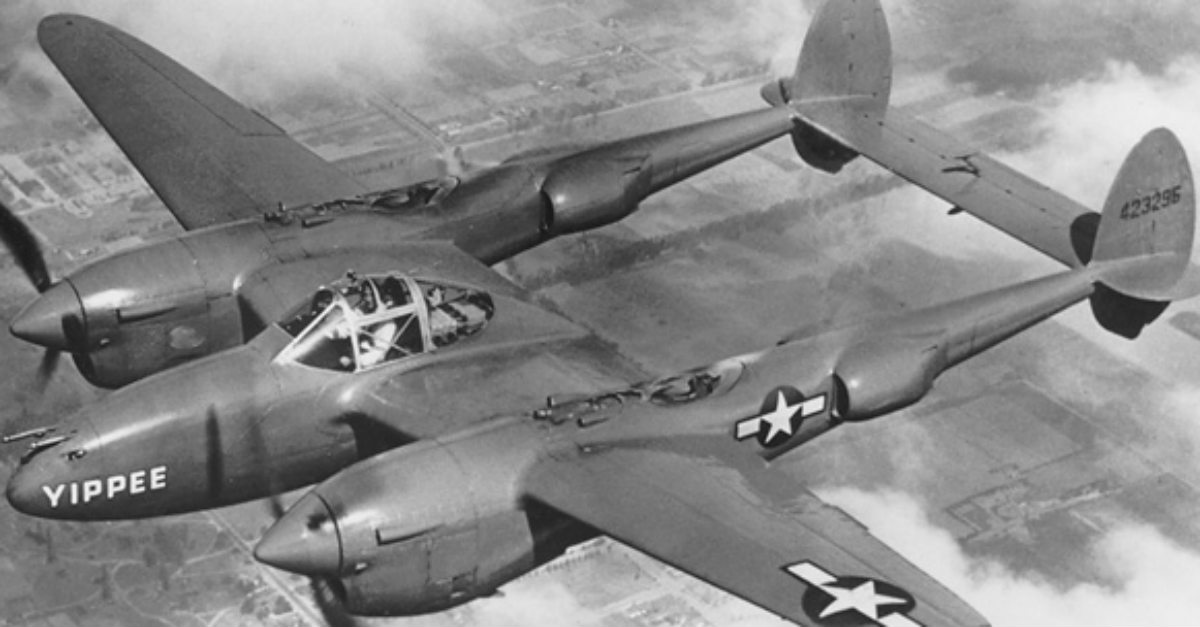
Designed by legendary Lockheed engineer Clarence “Kelly” Johnson—who was also the genius behind the SR-71 Blackbird—the Lockheed P-38 Lightning’s distinctive design and stellar performance must have struck the enemy like a bolt from the blue when it went into service in July of 1941.
The body was comprised of twin booms containing the engine and the props with a center-mounted fuselage containing the cockpit. This unique design made it easy to distinguish from other fighters of the war, as both Allied and Axis propaganda noted. Despite its appearance, the P-38 was a single-seater fighter capable of truly impressive performance.
The top speed of 414 miles per hour meant that it could catch almost all enemy aircraft in the sky, and the array of armament that the P-38 brought to the party made it indomitable: one 20mm canon, four Browning M2 .50 caliber machine guns, and four three-tube M10 rocket launchers could deliver a great deal of pain.
It could also operate as a fighter-bomber, carrying up to 2,000 lbs of ordinance from various drop-points on the frame.
IAR 80
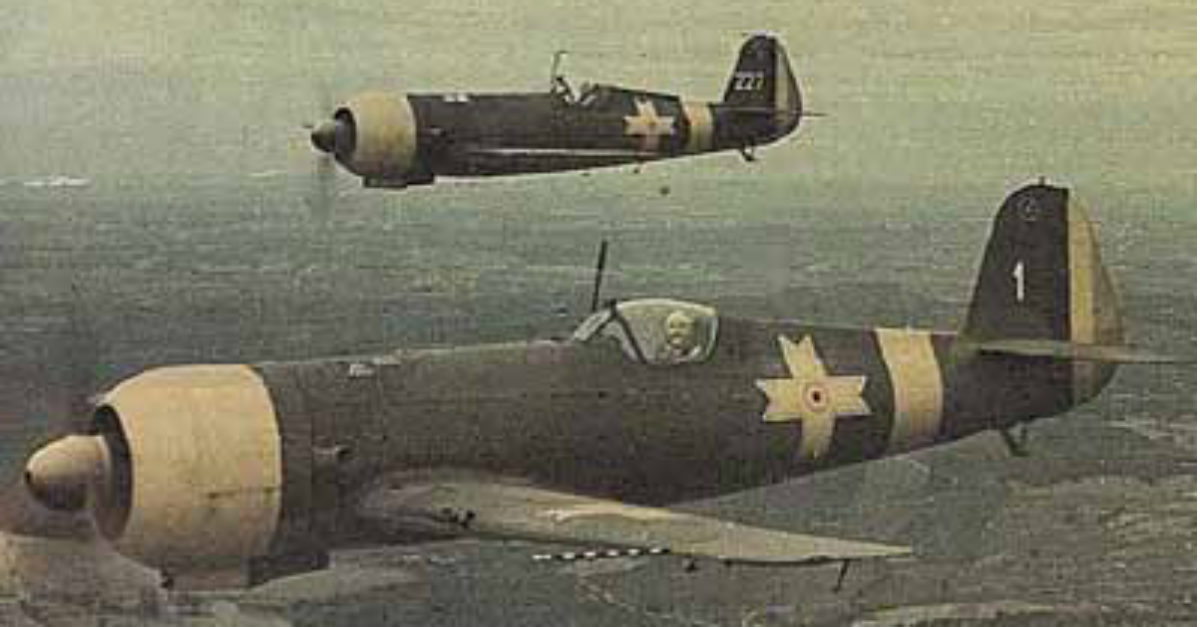
Though it often goes unmentioned in popular history, Romania did play a role in the Second World War on the Axis side. Perhaps due to its distinct cultural history, Romania also developed its own fighter for use in the war: the IAR 80.
Produced by the Industria Aeronautică Română (IAR) from 1941 until the end of the war, the IAR 80 got off to a rocky start, but quickly proved to be a maneuverable and robust design, capable of quick attacks that could devastate unwary opponents. The all-metal monocoque design and the elongated body made the IAR 80 a relatively nimble bird able to bank and turn quickly and tightly.
The bubble canopy provided excellent visibility for dogfighting, and the speed was competitive—347 miles per hour top speed. Armed with two 20mm cannons and four 7.62mm machine guns, the IAR 80 could punch above its weight in close quarters air battle.
Sadly, no period IAR 80s remain. Following the defeat of the Axis power, the survivors were all scrapped. However, two have been rebuilt post-war, and are on display in their native Romania.
Vought F4U Corsair
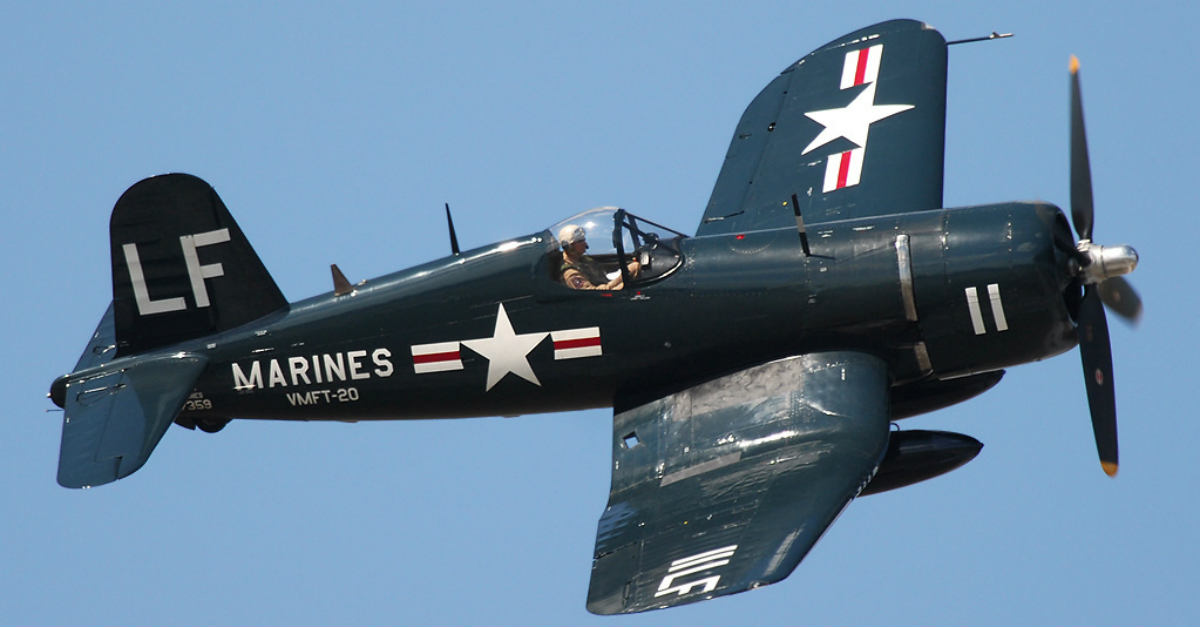
Serving through the Second World War and into the conflict in Korea, the F4U Corsair quickly established a reputation as one of the toughest flying machines of its day. Originally designed as a carrier-based fighter, the Corsair quickly became a favorite of the United States Marine Corps for close air support during ground operations.
Everything about the Corsair was overpowered: the single Pratt & Whitney engine put out 2,380 horsepower for a top speed of 446 miles per hour and an unmatched rate of climb. 6 M2 machine guns and 4 20mm cannons created a storm of death for anything the Corsair got in its sights.
And unique among World War II era prop driven fighters, the F4U Corsair could, in a power-on dive, come just shy of breaking the sound barrier. Not bad for a design that first flew in 1940.
WW2 Planes – Junkers Ju 88
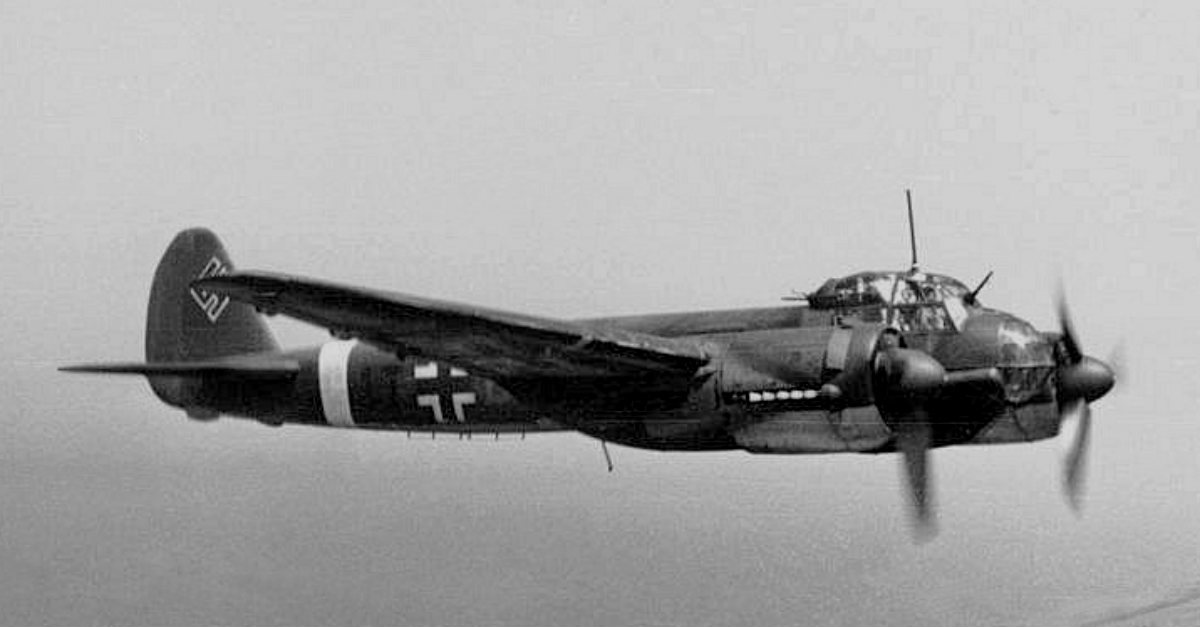
A mainstay of the Luftwaffe, the Junkers Ju 88 may not have fought on the right side of the Second World War, but it earned what honor it gained for performance under fire. A twin-engine aircraft, the Ju 88 was designed with versatility in mind for an air force in need of a multirole aircraft.
A fighter-bomber from the first generation of fighter-bombers, the Ju 88 was conceived as a schnellbomber, or “fast bomber,” carrying fewer bombs than a conventional bomber but with sufficient speed to outrun most fighters of the day. This design concept gave the Ju 88 the requisite versatility. It appeared as a fighter-bomber, a night fighter, a heavy bomber, a torpedo bomber, and more.
Specs vary depending on the model, but the twin engines were generally of BMW make, and the armament adapted to fit the mission at hand.
WW2 Planes – Mitsubishi A6M Zero
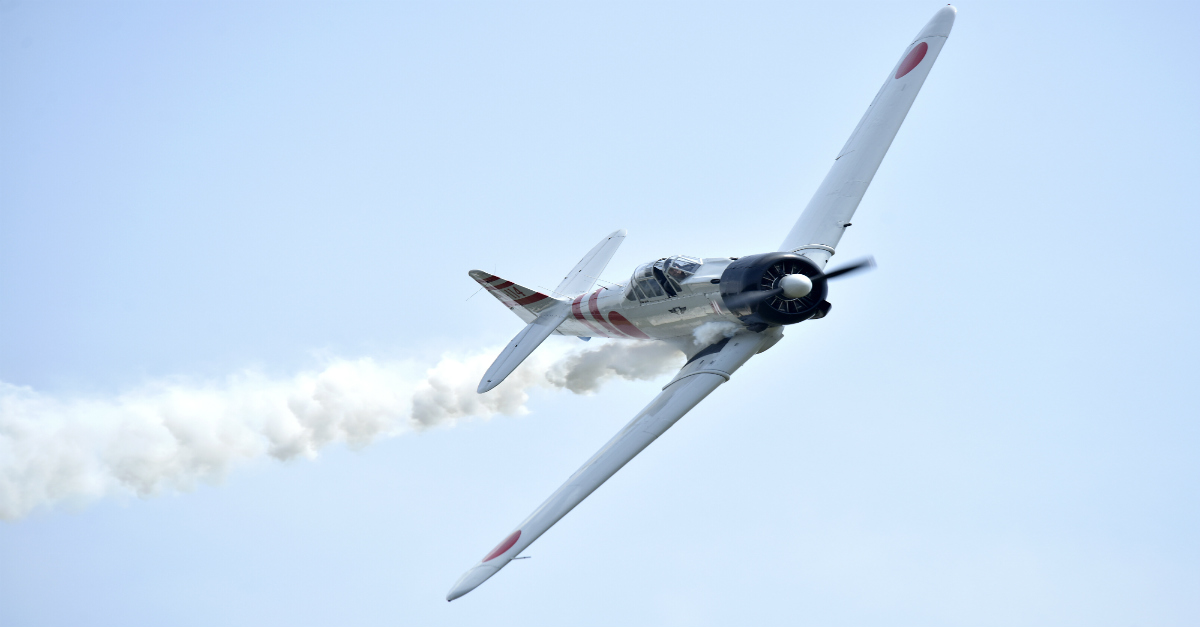
The Mitsubishi A6M Zero is one of the most contentious aircraft of the Second World War. While widely admired from a technical and performance standpoint, it’s also often reviled for its role in the attack on Pearl Harbor, in which so many American personnel lost their lives. Put into active service by Imperial Japan in July of 1939, the Zero quickly challenged many American assumptions about the capability of the Japanese armed forces at the time.
The low mounted cantilevered wings made for an aerodynamic sweet spot, allowing the Zero unsurpassed maneuverability. The Nakajima Sakae 12 engine delivered over 940 horsepower for a top speed of 410 miles per hour. Two .303 caliber machine guns and two additional 20mm cannons gave the Zero far more firepower than most fighters of its day.
While it may have played a role that will live in infamy, the power and performance of the A6M Zero warrants respect.
WW2 Planes – Hawker Hurricane
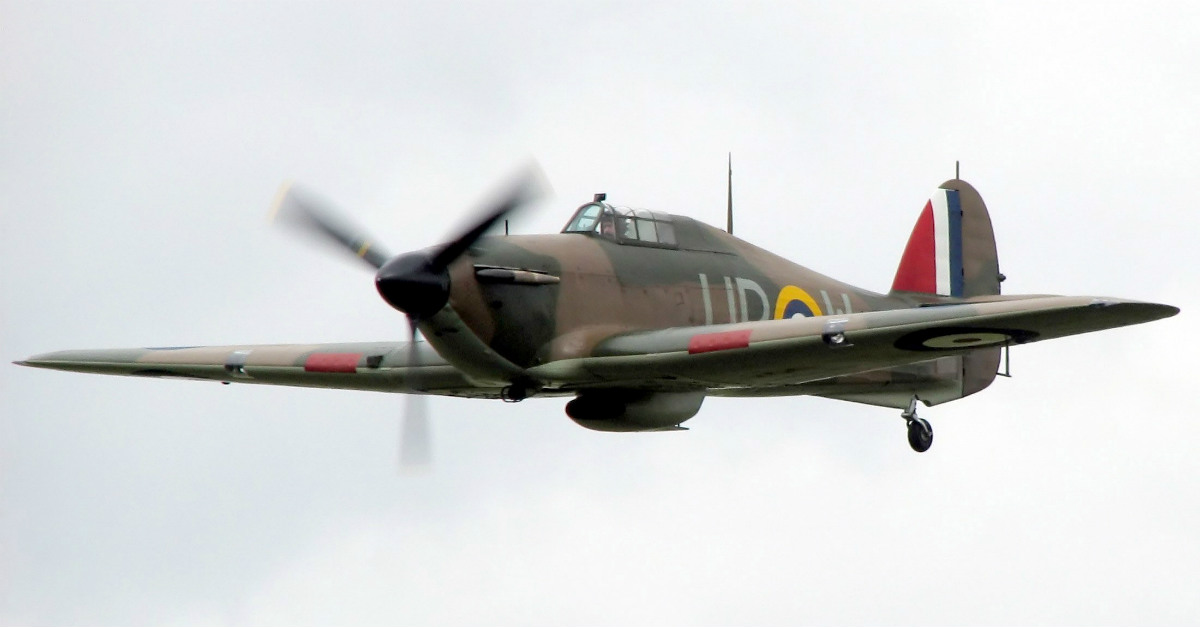
From its first appearance in active service in 1937 till its final flight, the Hawker Hurricane earned its place as one of the most important fighter aircraft of all time. This single-seater cut its teeth during the Battle of Britain when—despite being outnumbered by superior aircraft—the Hurricane rained fire on any Luftwaffe bomber unlucky enough to come into its cross-hairs.
A Rolls Royce Merlin engine provides the power to push this kite to 340 miles per hour, while 4 Hispano MkII cannons provide enough firepower to knock any adversary of the time right out of the sky.
While close to 15,000 were produced during the war, in both land-based and aircraft carrier configurations, only about 12 remain in airworthy condition now. They are much loved by hobbyists and museums as a piece of living history.

